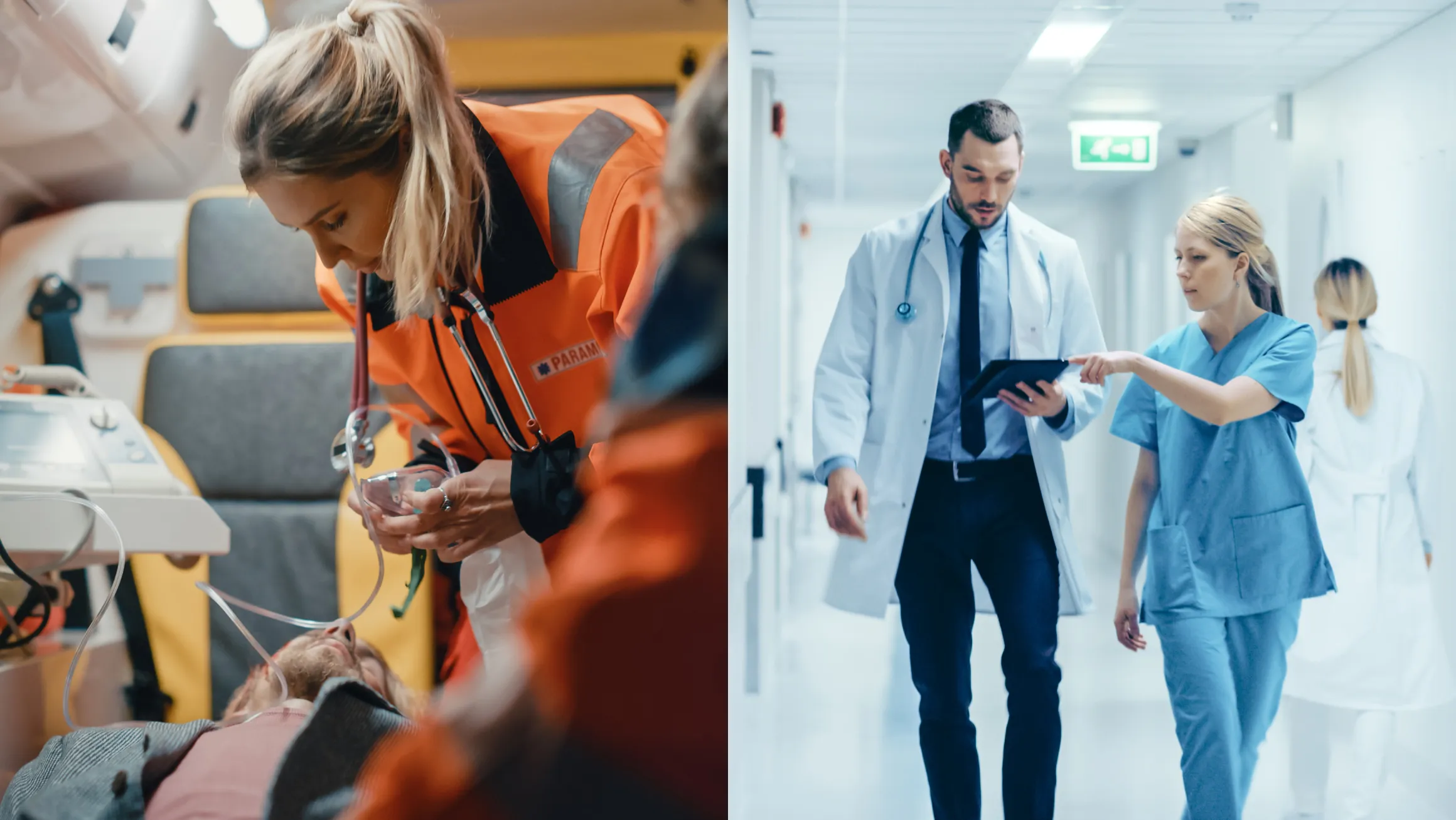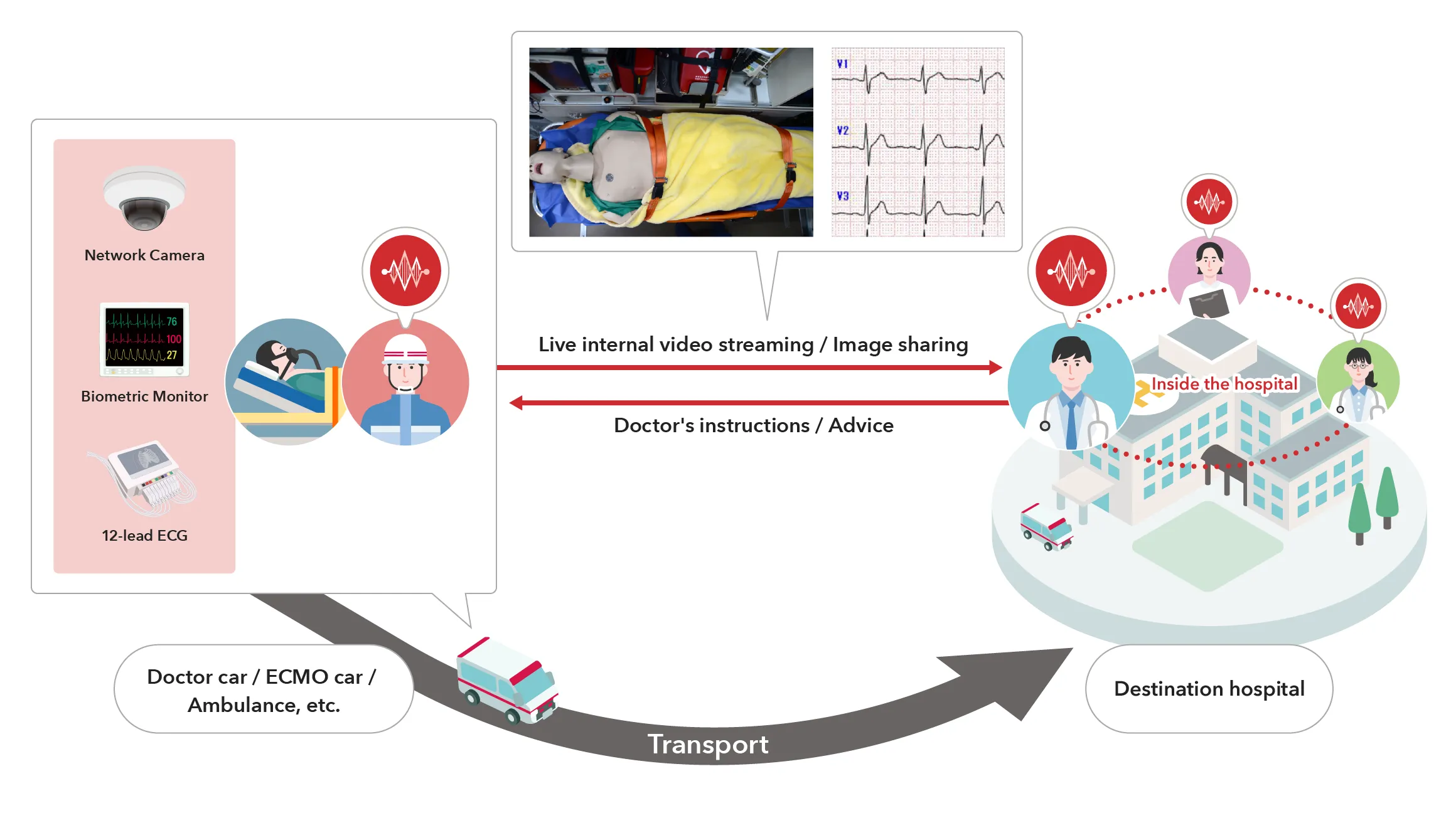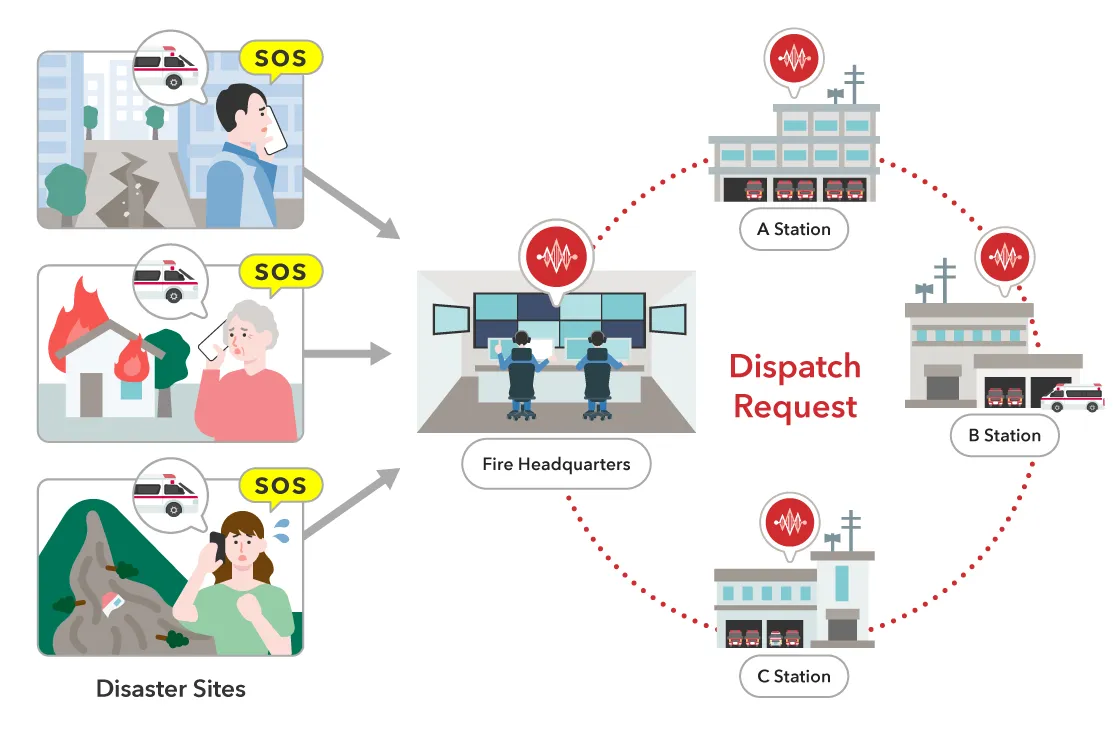Tele-Consult for Pre-Hospital Emergency Care
Join EMS
Provide prompt and accurate treatment and seamless emergency medical care system at the scene of an emergency
In order to improve the life-saving rate of patients, it is important for emergency medical personnel to quickly and accurately communicate the situation at the emergency scene and patient information to the destination, and for physicians to provide instructions, guidance, and advice on first aid and other medical treatment from a medical perspective, and to provide prompt and accurate treatment upon arrival at the hospital. In some areas, long travel time to the destination medical institution is an issue, and a seamless emergency medical care system that makes effective use of limited medical resources is required.
Overview

The system acquires images from cameras and monitor systems installed in doctor cars, ECMO
cars, firefighter ambulances, and private ambulances, and shares live video feeds of
patient conditions and biometric monitors, as well as waveform images and images such as
12-lead electrocardiograms. The system supports the on-site medical system for
pre-hospital emergency care by enabling doctors at the destination to give accurate
instructions, guidance, and advice in real time based on the images in the ambulance and
other vehicles.
In addition, the destination can prepare for optimal treatment even
before the patient arrives based on accurate patient information obtained in advance,
leading to shorter treatment start times, thereby contributing to higher patient survival
rates and improved prognosis.
Improving the efficiency of emergency services in times of disaster, etc.

Information is shared simultaneously from the fire headquarters command center to each branch office in the event of a disaster or the occurrence of a large number of injured or sick people, and emergency personnel are able to know the movements of other ambulances.
What we can achieve
- 01
Video transmission of emergency scene conditions
Live transmission of video from cameras, biometric monitors, and other equipment in a high-security environment allows sharing of complex situations at the emergency scene.
- 02
Shorter time to start treatment
Enables rapid sharing of accurate information on the scene and patient condition with medical staff at the destination, helping to improve the efficiency of patient treatment and other receiving arrangements.
- 03
Remote support from the transport site
Remote support can be provided to physicians, paramedics, and EMTs at the scene of an emergency from specialists inside or outside the destination hospital.